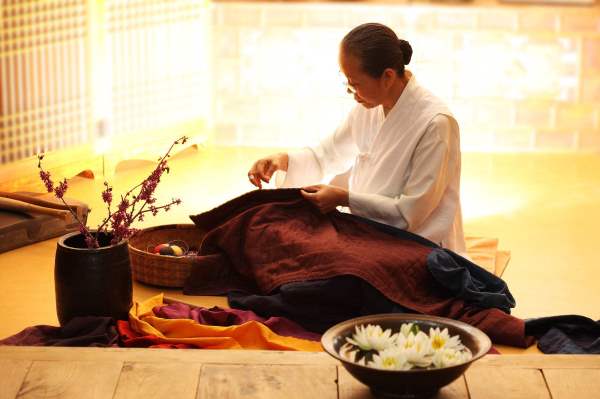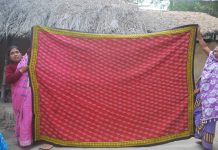South Korean textiles is particularly known for its delicate weaving and needlework. The materials of special use include cotton, silk and hemp. Key techniques include jasujang (embroidery), jogakbo (patchwork quilts), nubijang (quilting) and bojagi (wrapping cloth).
Korea is famous for the fine production of textile materials. Silk weaving (myeongju) is an ancient technique practiced today particularly in Gyeongsangbuk-do. The weaving of hemp (gokseong dolsilnai) is renowned for its thin and fine quality.
Jasujang (embroidery) has been used on clothing since the Three Kingdoms Period, two thousand years ago. During the Joseon Period is became a noble craft form, applied not only to clothes, but also to screens, domestic wares and art works. Korean embroidery is known for its bright colours and fine detail. Today, fine embroidery can be found at the Museum of Korean Embroidery in Nonhyun-dong.

Nubijang (quilting) is especially developed in Korea. The nubi technique involves sewing cloth with a layer of cotton, fur or mulberry paper. This is used for insulating clothing. For clothes and bedding, the patterns are made from straight lines. For wrapping cloth and pouches, there is a mix of straight and curved lines. This labour-intensive craft is gradually declining.
Bojagi (wrapping cloth) is a square material used for gifts, weddings (for wrapping the wooden wedding geese) and Buddhist rites. The cloth is often embroidered (subo), featuring a tree motif, flowers, birds and symbols of good luck. They are often made from leftover scraps of fabric in a careful arrangement.
Many traditional textile crafts are involved in the hanbok dress. The hanbok consists of a jeogori (blouse or jacket), chima (full skirt) and sokchima (underskirt). Men wear baji (pants) instead. The jeogori has a removable white collar and coat strings. Hanbok is still a popular dress for special occasions.
The making of knots is also a special Korean craft. Their knots have the same shape at the front and back. They developed from practical hunting tools to works of art in themselves. Today they are used to decorate, such as the mangsa knot used on jewellery pouches. The Dong-Lim Knot Museum is a feature of the Hanok neighbourhood in Seoul.





